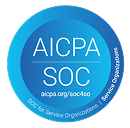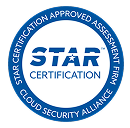Scaling a team while optimizing operations is a high-wire act—balancing more clients, better experiences, and efficiency all at once.
Customer onboarding sits at the heart of this challenge. It’s the stage when first impressions are made, expectations are set, and relationships are built. But it’s not just about satisfying customers. You must also ensure your team can operate effectively without compromising their productivity.
This manifests in a common dilemma: Do you rely on a single point of contact for customer onboarding or embrace joint ownership for better coverage?
Both approaches come with trade-offs.
- Single-owner model: Clients appreciate having a dedicated point of contact who knows their needs inside out. It ensures consistency and accountability but hinges too much on one person. If they're unavailable—whether due to illness, vacation, turnover, or other reasons—projects stall, and clients feel neglected. Internally, knowledge silos is another risk, with critical insights trapped with one individual.
- Joint ownership model: Splitting responsibilities across team members improves coverage, spreads expertise, and provides flexibility. But if not managed well, clients can feel like they’re being shuffled from one person to another.
Internally, it can create confusion, dilute accountability, and lead to mixed messaging.
Finding the right model for your team means understanding the trade-offs and designing processes that mitigate those risks.
Read on to discover the Rocketlane Preflight community’s insights on finding the right balance between exceptional customer experiences and streamlined team management.
1. Build redundancy without sacrificing ownership
Instead of overloading team members with overlapping responsibilities, many are adopting strategies that balance consistency with redundancy. Here are some approaches that teams are experimenting with:
- Hybrid approach: Some teams use a primary owner with a shadow partner for high-value clients or complex projects. The shadow partner attends key meetings and stays updated through shared systems but takes an active role only during absences. This ensures continuity without diluting accountability or causing confusion.
- Rotational coverage: In this model, a secondary team member stays updated on key project details but only steps in when necessary. Rotational coverage offers more flexibility, where the secondary person is not regularly involved unless necessary, making it more reactive and less structured. This avoids redundancy while ensuring someone is always prepared to step in when needed.
- Dynamic ownership: Rather than having a rigid structure, responsibilities shift based on availability, capacity, or expertise. This approach offers flexibility and allows teams to adapt quickly to changing circumstances. Dynamic ownership is particularly useful for managing high workloads without compromising accountability.
- Role-specific specialization: Splitting the onboarding process into phases such as setup, training, and go-live, with dedicated owners for each stage. This approach relies on having specialists focus on their strengths so clients benefit from expert guidance at each stage. However, this model also maintains a consistent point of contact for overall communication, ensuring clients never feel lost in the process.
In all these models, having visibility into project progress is crucial. Centralized dashboards and thorough documentation are non-negotiable when it comes to helping teams coordinate without overlapping responsibilities.
2. Strengthen documentation for seamless continuity
As Srikrishnan Ganesan, co-founder and CEO of Rocketlane, points out, “Strong documentation can do the trick instead of, say, two people spending time on understanding each project. Otherwise, you end up with both attending the same meetings just for context.”
Invest in structured, accessible documentation. AI-driven tools like Rocketlane’s AI Fills can automatically capture insights from calls and generate detailed notes, making it easy for anyone to step in and contribute without missing critical details.
Besides ensuring continuity, effective documentation serves as a foundational layer for any model, whether you’re testing rotational coverage, role-specific specialization, or dynamic ownership. Without clear, accurate records, even the most well-designed processes can crumble when someone becomes unavailable.
3. Simplify touchpoints to improve consistency
Instead of expanding the number of people involved in each project, simplifying processes by consolidating ownership can drive consistency. However, simply reducing the number of team members isn’t enough. You need to ensure resilience and scalability through approaches such as:
- Cross-training and skill matrices: Formalize cross-training through documented skill matrices, where each team member’s competencies are mapped and regularly updated. This helps you quickly identify coverage gaps and ensures smooth transitions if someone is unavailable.
- Handover protocols: Design clear protocols for handovers. Use playbooks that outline specific steps, tools, and context required to bring a new team member up to speed efficiently.
- Periodic role audits: Regularly assess team roles and processes to identify unnecessary touchpoints or bottlenecks. Streamline these areas by redefining responsibilities or consolidating overlapping tasks.
4. Prioritize feedback loops to continuously improve your process
Scaling customer onboarding is as much about new processes as it is about refining existing ones. Establishing feedback loops ensures your team stays responsive and adaptive. Make sure to consider the following:
- Scheduled checkpoints: Implement regular, structured reviews of ongoing projects, identifying pain points and areas for improvement in real-time. Actively collect customer feedback at key milestones through surveys or direct conversations.
- Internal debriefs: Encourage CSMs to share their onboarding experiences with peers during weekly syncs to identify both successes and challenges.
- Iterative playbook updates: Continuously refine your onboarding playbooks based on real-world feedback, ensuring they remain relevant and effective.
- Data-driven improvements: Use analytics to track progress and uncover patterns, such as common drop-off points or prolonged phases, to fine-tune your approach.
Interested in more conversations like this? Join the Preflight community to connect with experts and peers sharing real-world post-sale strategies and insights.

.avif)













